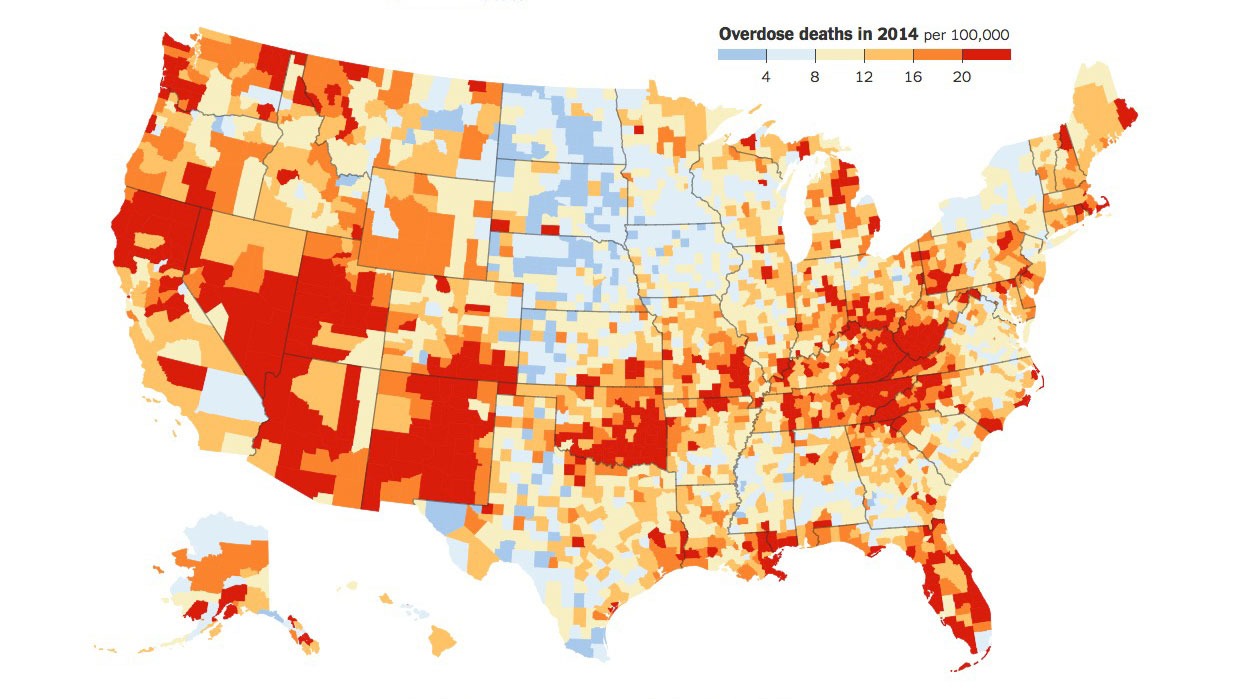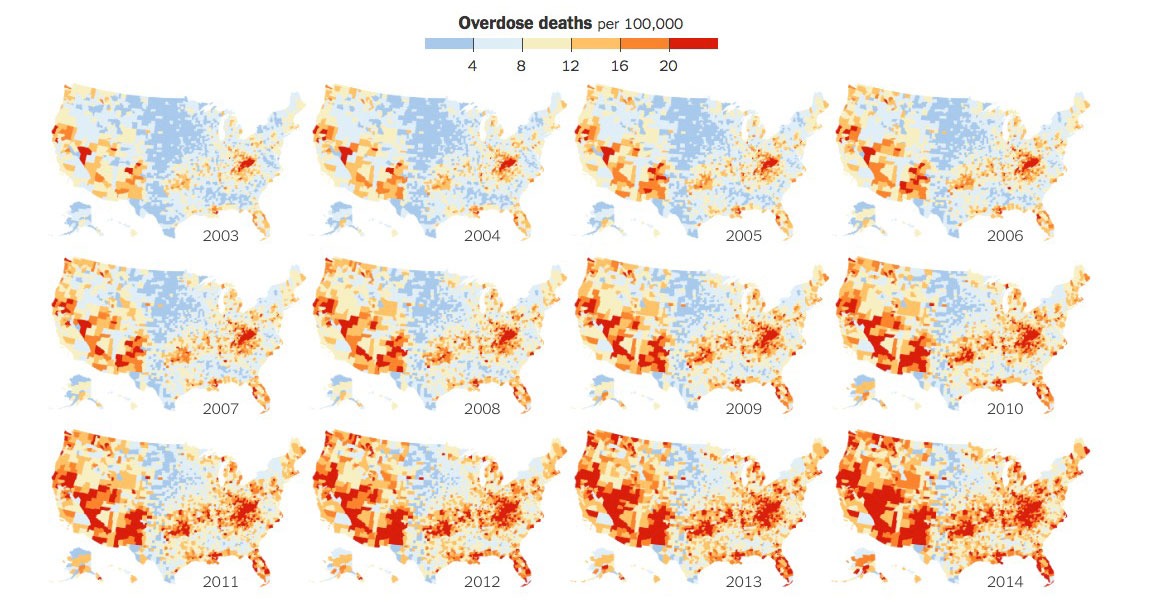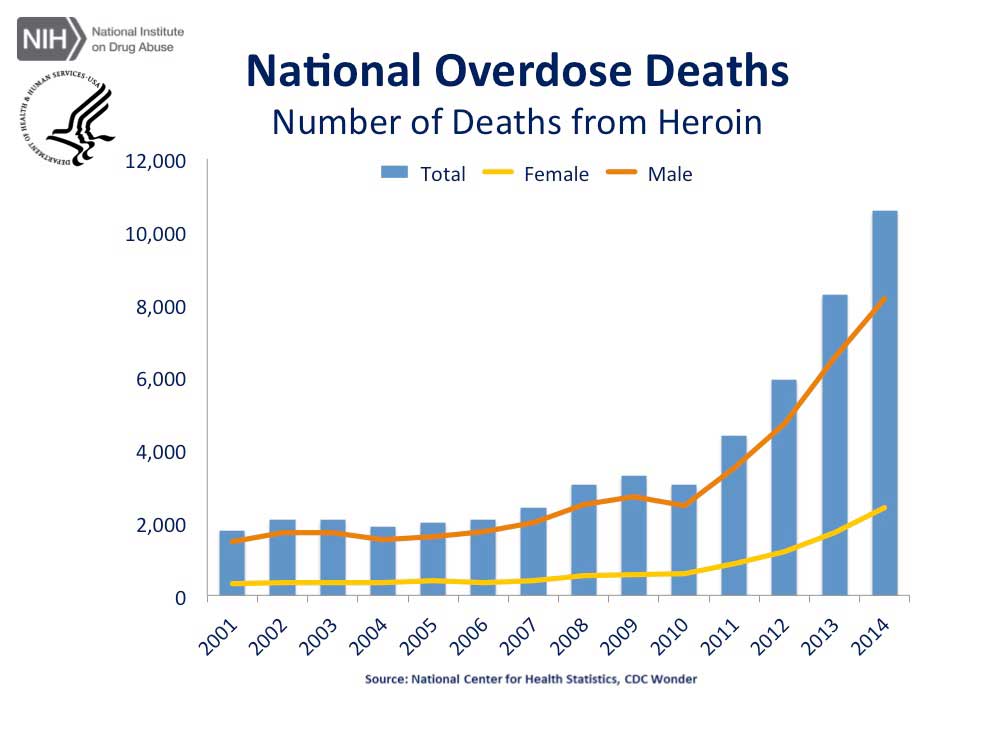Table of Contents
Dr. Alberto Sola is one of the world’s leading experts in medically-based ibogaine treatment; he has more clinical experience with safe and effective ibogaine administration than any other M.D. in the world today.
Last Updated on May 29, 2024 by Dr. Alberto Solà
Opioid Addiction Statistics: The Opioid Epidemic in America
Opioid addiction is a major problem for people across the United States. To better understand the opioid epidemic in America, let’s take a look at opioid addiction statistics, opioid addiction facts, opioid addiction data, and opioid addiction treatment.
Over the course of the past decade, addiction has spread from the urban environments that once contained the vast majority of its victims, and overrun suburban and rural middle-america. Areas that light up brightest on the current addiction map of the US, are the Southwest and Appalachia regions.

More Opioid Prescriptions than People
As of 2012 (which is the last available year in this particular dataset), there were 12 states within the United States, that had more opioid prescriptions written, than human beings living within the state in question.
Number of Opioid Prescriptions Written per 100 People
Alabama
Oklahoma
Indiana
Tennessee
Mississippi
Michigan
West Virginia
Louisiana
South Carolina
Kentucky
Arkansas
Ohio
Progression of an Epidemic

%
Whites
%
Native Americans
%
Blacks
%
Hispanics & Latinos
Drugs now Kill more Americans than Car Accidents
In the olden days, back in 1999, there were more than twice as many fatalities associated with motor vehicle accidents vs. drug overdoses. By 2014, those figures had reversed themselves. In 2014 there were 29,230 motor vehicle deaths, and 47,055 individuals died due to fatal drug overdoses.
- There were an estimated 72,000 drug overdose deaths in the United States in 2017; among these fatalities, nearly 30,000 drug users abused fentanyl and fentanyl analogs, i.e. synthetic opioids.
- The number of Americans who died from drug overdoses – including deaths associated with illicit drug and prescription opioid abuse – doubled between 2007 and 2017.
- From 2002 to 2017, there was a 4.1-fold increase in the total number of U.S. overdose deaths linked to opioid analgesics, along with illicit synthetic opioids and heroin abuse.
- The number of deaths involving prescription opioid pain relievers rose 1.9-fold from 2002 to 2011; however, CDC points out that the rate of deaths related to prescription opioid pain relievers has remained mostly stable since 2011.
- Between 2002 and 2017, there was a 22-fold increase in the total number of overdose deaths in the United States involving the use of fentanyl and other synthetic opioids.
- There was a 7.6-fold increase in the total number of U.S. overdose deaths involving heroin use between 2002 and 2016.
Truth Initiative also offers the following statistics related to opioid use in the United States:
- More than 115 Americans die from an opioid overdose every day.
- Someone in America dies from an opioid overdose approximately every 12 minutes.
- Whereas the death rates associated with heart disease and cancer have decreased substantially over the past decade, the death rate associated with opioid pain medication has increased during the time frame.
- In 2016, two-thirds of all drug overdose deaths in the United States involved some type of opioid.
- Every day in 2016, an estimated 1,600 young adults abused an opioid prescription for the first time.
- More than 117,000 people died due to a prescription opioid overdose in 2016.
- The average day’s supply of opioids prescribed by U.S. doctors rose 33% between 2005 and 2012.
- Healthcare providers wrote 259 million opioid pain reliever prescriptions in 2012; this is enough to allow each American to fill one opioid pain reliever prescription.
These opioid addiction statistics paint a troubling picture of opioid abuse in the United States. Additional statistics also reveal that the opioid epidemic affects individuals across the country.
Opioid Addiction by State
The National Institute on Drug Abuse offers state opioid-related overdose death rates and opioid prescribing levels. Here are some of the key findings from the National Institute on Drug Abuse’s opioid research:
- West Virginia had the highest rate of opioid-related overdose deaths per 100,000 people (43.40) in 2016.
- New Hampshire (35.80), Ohio (32.90), Maryland (30.00), and Washington D.C. (30.00) rounded out the top-five areas of the United States in terms of opioid-related overdose deaths per 100,000 people in 2016.
- Nebraska had the lowest rate of opioid-related overdose deaths per 100,000 people (2.40) in 2016, followed by Montana (4.20), Texas (4.90), California (4.90), and South Dakota (5.00).
- In terms of opioid prescriptions per 100 people in 2015, Alabama (120.30) had the highest rate among all states, followed by Tennessee (118.30), Arkansas (111.20), Mississippi (107.50), and Louisiana (103.20).
- Hawaii had the lowest rate of opioid prescriptions per 100 people (45.30) in 2015, followed by California (47.90), New York (51.30), Minnesota (54.20), and New Jersey (55.00).
As the aforementioned statistics indicate, America’s opioid addiction epidemic is a national problem. The opioid epidemic also plagues individuals of all ages – even babies.
Opioid Addicted Babies
The use of opioids during pregnancy is problematic for both moms-to-be and their babies. If a pregnant women engages in opioid abuse, her baby may be susceptible to a variety of short- and long-term health problems, including:
- Neonatal Abstinence Syndrome (NAS): Occurs when opioids pass through the placenta and a baby becomes addicted to these drugs. The National Institute on Drug Abuse estimates 21,732 babies were born with NAS in 2012, which represents a five-fold increase from 2000. A baby born with NAS may experience a painful withdrawal, as he or she won’t continue to receive drugs after birth. NAS-afflicted babies may struggle with the syndrome throughout their lives, too.
- Microcephaly: Occurs when a child’s brain does not develop correctly in the womb. Microcephaly, also referred to as small head circumference, is commonly associated with a small head. With this condition, a child may have a small brain as well.
- Sudden Infant Death Syndrome (SIDS): Refers to a sudden and unexpected death that occurs when a child is less than 1 year old. There is no known cause of SIDS, but some researchers indicate that drug abuse during pregnancy increases the risk of SIDS.
- Miscarriage and Stillbirth: Refers to the death of an unborn child prior to the sixth month of pregnancy (miscarriage) or death of an unborn child that occurs in the final trimester (stillbirth). Substance abuse is one of several reasons why miscarriage or stillbirth may occur.
- Placenta Abruption: Occurs when the placenta breaks away from the uterine wall prior to labor, thereby causing the unborn child to miss out on nutrients that he or she would otherwise receive from the mother through the placenta. Placenta abruption may occur due to drug use during pregnancy, and it may increase a child’s susceptibility to developmental problems.
In the United States, a baby is born suffering from opioid withdrawal approximately every 25 minutes, according to the National Institute on Drug Abuse. For every opioid that a mom-to-be ingests, the risk increases that her baby could suffer immediate and long-lasting health issues.
Conversely, with a safe, effective, and dependable opioid addiction treatment strategy, a mom-to-be – or any other opioid addict – can receive the necessary support to manage addictive behaviors.
Opioid Addiction Facts
The American Society of Addiction Medicine (ASAM) provides the following facts related to opioids and opioid addiction:
- Opioids are chemically linked and connect to opioid receptors on nerve cells in the brain and nervous system. They produce pleasurable effects and relieve pain, and as a result, are highly addictive.
- Opioids refers to a class of several well-known addictive drugs, including heroin, oxycodone, hydrocodone, codeine, morphine, and fentanyl, among others.
- An opioid addiction is usually characterized by a pathological desire and/or need for opioids.
- There is a strong correlation between heroin and opioid addiction; in fact, an estimated 23% of all individuals who use heroin become addicted to opioids.
- In 2015, there were 20.5 million Americans age 12 and older who dealt with a substance use disorder; among these individuals, 2 million were dealing with a substance use disorder that involved prescription pain relievers, and 591,000 were dealing with a substance use disorder that involved heroin.
- In 2015, 122,000 adolescents (age 12 to 17) were addicted to prescription pain relievers, and 21,000 said they had used heroin within the past 12 months.
- From 1994 to 2007, the prescribing rates for prescription opioids nearly doubled among adolescents and young adults.
- Women tend to be prescribed prescription pain relievers, given higher doses of prescription pain relievers, and use prescription pain relievers for longer periods of time than men.
- Between 1999 and 2010, 48,000 women died due to a prescription pain reliever overdose.
- Prescription pain reliever overdose deaths among women rose more than 400% between 1999 and 2010; comparatively, among men, this figure increased 237% during the time frame.
- Heroin overdose deaths among women tripled between 2010 and 2013.
Shatterproof also provides the following facts about opioids:
- Opioids quickly lead to tolerance and physical dependence; this ultimately leads people to consume larger doses to achieve the same results following initial opioid use, increasing the likelihood of an opioid addiction.
- Common side effects of opioid use include confusion, nausea, and depression, and a person who abuses opioids may appear drowsy and disoriented.
- Opioids sometimes cause a person’s heart rate and breathing to slow down; eventually, long-term opioid abuse may cause a person’s breathing to stop altogether, leading to death.
- An opioid overdose victim may become unconscious or experience pinpoint pupils or respiratory depression, among other symptoms.
- If a person overdoses on opioids, naloxone is available; to date, this medication has been used to save more than 26,000 lives.
Opioid addiction is a problem that must be addressed. If a person is dealing with an opioid addiction or knows someone struggling with an opioid addiction, don’t wait to get help. Instead, seek out medical support to explore all available opioid addiction treatment options.
Opioid Addiction Treatment
The National Institute on Drug Abuse points out that several medications are commonly used to treat opioid addiction, and these medications include:
- Buprenorphine: Acts as a partial opioid antagonist. Buprenorphine has been shown to help reduce the risk of opioid misuse and lower opioid use euphoria and physical dependence.
- Methadone: Blocks the high often associated with heroin, morphine, oxycodone, codeine, and hydrocodone abuse. Methadone sometimes helps replace the opioids in an addict’s system and has milder effects in comparison to those associated with other opioids.
- Naltrexone: Limits the effects of opioids in the brain. Extended-release naltrexone may be used as part of an opioid treatment program and is designed to help opioid addiction relapse.
Various opioid addiction treatment programs are also available, according to the National Institute on Drug Abuse. These treatment programs include:
- Long-Term Residential Treatment: Involves 24-hour patient care in a non-hospital setting. A long-term residential treatment generally requires a patient to commit to a six- or 12-month program where a community provides support to help an individual overcome his or her opioid addiction.
- Short-Term Residential Treatment: Involves a modified 12-step approach to address opioid addiction. A short-term residential treatment may involve a three- or six-week program that involves a combination of outpatient therapy and participation in a self-help group.
- Outpatient Treatment: Serves as a low-intensity addiction treatment program. An outpatient treatment often involves group counseling and offers opioid addiction education and other learning resources.
- Individualized Drug Counseling: Emphasizes the short- and long-term ramifications of opioid addiction, along with the physical, emotional, and psychological elements related to opioid abuse. Individualized drug counseling helps a patient build skills so he or she can avoid opioid addiction relapse.
- Group Counseling: Prioritizes peer discussion to help an individual develop a drug-free lifestyle. Group counseling involves the use of social reinforcement and may be used in conjunction with cognitive-behavioral therapy.
Opioid addiction has been a problem in the United States for many years. Researchers have explored many ways to address opioid addiction, and myriad opioid addiction treatment options are now available.
Yet opioid addiction treatments frequently focus on the use of medications to minimize the impact of withdrawal symptoms or reduce the risk of relapse. Or, some opioid addiction treatments fail to provide individuals with the skills, tools, and resources they need to achieve long-term addiction relief.
Clear Sky Recovery now offers ibogaine therapy for opioid addiction. Our ibogaine treatment program helps individuals uncover the root cause of an opioid addiction and avoid post-acute withdrawal syndrome (PAWS).
How Did we Get Here?
So how did this situation happen in the United States? In one word: OxyContin.
Towards the end of 1995, the FDA approved the narcotic analgesic branded as OxyContin. In its first year on the market, OxyContin generated over $45 million in sales for Purdue Pharma. 5 years later, by 2000, that number was at over $1.1 billion. An increase of over 2000% in just over 4 years.
Ten years after, OxyContin had generated over $3.1 billion in profits and accounted for roughly 30% of the entire prescription painkiller market. Within a decade, a single, small, privately-held, family-owned corporation, controlled nearly a third of the entire US market for narcotic analgesics. That’s a pretty amazing accomplishment that most drug dealers would envy.
When Purdue Pharma introduced OxyContin to the marketplace in the mid 90s, the marketing it employed was highly similar to Bayer’s original marketing materials for heroin (which claimed that Heroin® was a safer, non-addictive form of morphine. In retrospect this statement was wishful thinking at best). The marketing for OxyContin was misleading enough, that in 2007 Purdue Pharma pled guilty to knowingly misbranding the drug, “with intent to defraud and mislead the public,” and paid $634 million in penalties (which is one of the largest settlements ever paid in U.S. history by a pharmaceutical company. It produced a minimal dent in their profits).
According to The American Journal of Public Health, Purdue Pharma more than doubled the number of its sales and marketing representatives between 1996 and 2000, from 318 to 671. The average bonuses being paid out in their marketing department were $70,000 per annum, with some sales reps bringing home over a quarter million in annual bonuses. In 2001, by which time Purdue Pharma was well aware of the problems OxyContin was causing, they spent over $200 million in marketing OxyContin alone.
The Promotion and Marketing of OxyContin: Commercial Triumph, Public Health Tragedy
Where Do We Go From Here?
While the last 15 years have seen an increase in the number of medications legally available for opioid maintenance within the United States (most notably buprenorphine, in the Subutex and Suboxone formulations), there has been absolute silence and a total lack of development in effective opioid detox medications. Your treatment options are pretty much the same as they would’ve been back in the 1980s; very little — bordering on nothing — has changed in the past several decades.
Fortunately, ibogaine treatment for opiate addiction is extremely effective for many of Purdue Pharma’s pain-management products, including, but not limited to: OxyContin, hydromorphone, oxycodone, fentanyls, codeine, MS Contin (controlled-release morphine sulfate), and hydrocodone.
Most of Purdue Pharma’s narcotic analgesics are highly compatible with ibogaine treatment for drug dependence. Their drugs are usually pure agonists, and relatively short-acting opioids, with no extended half-life. In short: they’re very similar to heroin. At Clear Sky Recovery’s ibogaine clinic, we have extensive experience with treating patients for OxyContin dependence.
If you, or a loved one, are experiencing the consequences of OxyContin dependence, please feel free to contact us, and we’ll help you assess the suitability of ibogaine drug treatment for your particular situation.
Ibogaine Therapy for Opioid Addiction
At Clear Sky Recovery’s medically-based ibogaine treatment center, ibogaine therapy is administered by our board-certified physicians. Here, we provide a safe, effective, and painless detoxification from opioids and other addictive drugs.
Ibogaine treatment for opioid addiction has been shown to help eliminate up to 98% of drug withdrawal symptoms, as well as alleviate PAWS. During ibogaine therapy, Ibogaine HCl is used to help an opioid addict return to a pre-addicted state. Ibogaine HCl resets a patient’s drug dependence and helps him or her painlessly get rid of addictive behaviors.
Following an ibogaine treatment program, a patient will have a foundation in place to enjoy a drug-free lifestyle. Each patient is provided with a personalized aftercare treatment plan designed to deliver long-lasting results. With this plan, a patient is well-equipped to avoid an opioid addiction relapse.
Choose Clear Sky Recovery for Ibogaine Therapy for Opioid Addiction
The opioid epidemic in America is ongoing. But for those who are ready to seek opioid addiction treatment or know someone who is prepared for opioid addiction treatment, Clear Sky Recovery is available to help. Our ibogaine therapy program helps patients analyze their opioid addiction and take the right steps to correct addictive behaviors both now and in the future. To find out more about our ibogaine treatment program for opioid addiction, please contact us today at 305.901.5371.
Drug Overdose Deaths Increase for 11th Consecutive Year
CDC Website
2016: Opioid Addiction Facts & Figures
ASAM (American Society of Addiction Medicine)
Historical Opioid Marketing
MindVox Images
Statistics, Data and Maps, courtesy of the CDC and NIH.
Sources:
https://www.drugabuse.gov/related-topics/trends-statistics/overdose-death-rates
https://opioids.thetruth.com/o/the-facts/all
https://shatterproof.prod.acquia-sites.com/all-about-naloxone
https://www.naabt.org/faq_answers.cfm?ID=2
https://www.webmd.com/mental-health/addiction/what-is-methadone#1
https://www.webmd.com/drugs/2/drug-7399/naltrexone-oral/details



